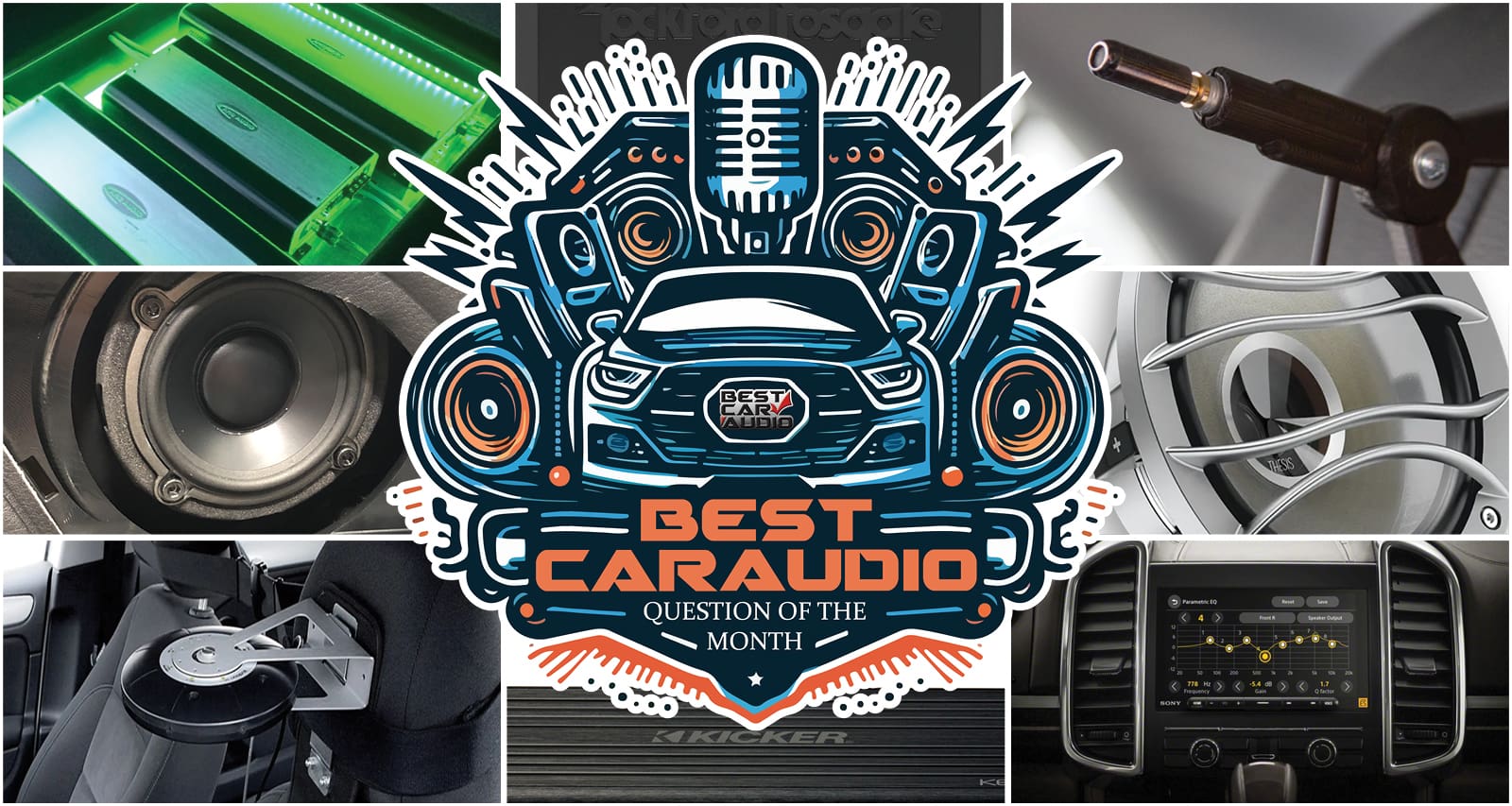The car audio question of the month for May is: What factor is most important in determining car audio system performance? Do the system design, equipment, integration, installation or calibration determine how accurate the system will sound? As with many questions related to audio systems, there’s no single answer. Let’s look at each aspect of a car audio installation to see how it might affect what we hear. This complexity is why it’s important to be informed and prepared when considering an upgrade.
Car Audio System Design
The first and most crucial step in upgrading a car audio system is to set clear goals for the upgrade. Whether it’s replacing a blown factory-installed speaker, enhancing bass, increasing volume, improving tonal balance, soundstage or imaging, it’s essential to have a clear vision of what you want to achieve. This step should be taken long before you consider visiting a car stereo shop. By putting together a list of your goals, you’re setting the foundation for a successful car audio system upgrade.
If you find yourself unsure about your goals, a visit to a local specialty mobile enhancement retailer can be a great help. Working with an expert, you can discuss your preferences and what you’d like to improve about your stereo system. Their expertise allows them to interpret your comments and translate them into clear goals for your audio system upgrade.
Once you’ve set your goals, the specialist will move on to the system design stage. This process can be straightforward if you’re planning to upgrade a pair of speakers in stock locations. However, if you’re considering a set of component speakers, it’s crucial to discuss the proper location for the tweeters. Will they fit behind a set of factory grilles? Do custom mounts need to be created? Is stage width or depth important to you? Clearly outlining your expectations and goals is key to the shop’s ability to deliver the audio system you desire.
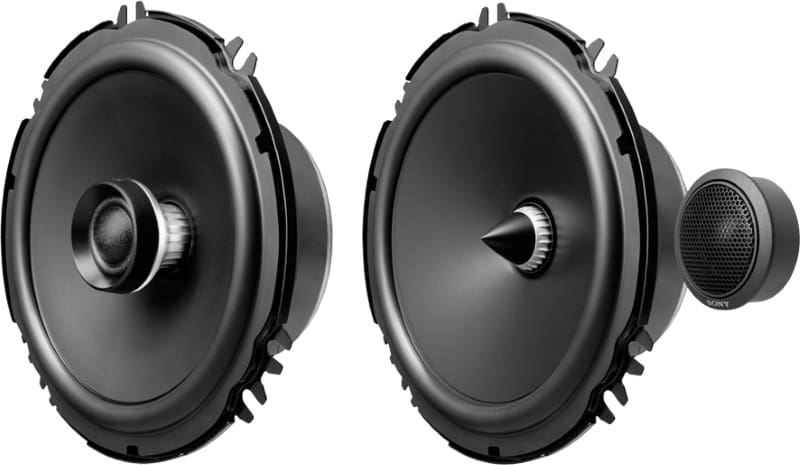
If you’re considering adding a subwoofer, there are even more questions. How loudly do you want the system to play? How much space can you sacrifice for the subwoofer enclosure? How powerful is the amplifier, and can the vehicle’s electrical system support it? Would you be happy with a carpeted enclosure, or do you want it to look like a part of the vehicle?
Suppose you’re working with a factory-installed amplifier with an upmixer or want to add a digital signal processor. In that case, you’ll need to ensure that you have enough processing and amplification channels for the system to perform properly. You might have a three-way speaker system on the left and right, a two-way system in the center, side speakers, rear speakers and a subwoofer channel. You’ll need 13 channels of processing and amplification to maximize the performance of a system like this. The system should be drawn out on paper or in software before you pick any processors, amplification, speakers or subwoofer.
Some modern car audio systems, like the Acura RSX with the ELS Studio 3D sound system, have overhead speakers. Some Nissan Kicks have speakers in the headrests. The EcoBoost-equipped Ford Mustangs produce engine sounds through the stereo system. Many new cars and SUVs have active noise-canceling systems. The product specialist working on designing your audio system upgrade needs to know this information and understand how potential upgrades will interface to produce a system that sounds good.
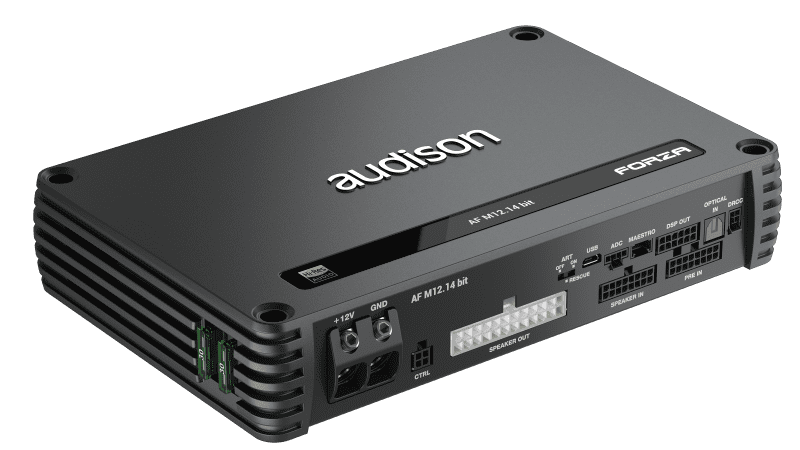
Product Selection
After you complete the system design, the next step is picking the products. The first criterion is size. The number of channels is usually the deciding factor for a signal processor. Next, you’ll need an amplifier. Unless you listen at very low volume levels, you must ensure that the amplifier can provide adequate power to the midbass speakers. The easiest way is to bridge two channels to each midbass driver. As such, the amp you choose must be bridgeable. You’ll also need to consider the overall power level. Forty to 60 watts of power is fine for most day-to-day listening. If you like to crank the volume, then 75 to 100 watts of power per channel is a better choice. Regardless of what the label on the back of the speaker indicates, very few midbass drivers or woofers can handle much over 125 watts of power, so you won’t need much more.
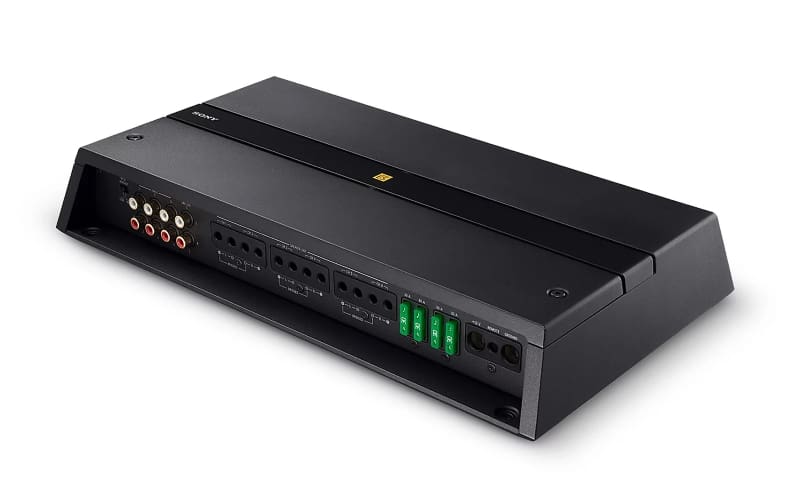
Now, we get into selecting speakers. Speakers are by far the most crucial component in any audio system. You could have the best source unit, processor and amplifiers ever made, but your car audio system won’t sound amazing if you don’t have good speakers. When shopping for genuinely high-quality speakers, look for linear flat spiders, shorting rings, copper T-yoke caps, well-damped cone materials, rigid dust caps, rubber surrounds and a strong basket. You should audition as many speakers as possible with the same music until you find a clear and detailed solution, especially at elevated volume levels.
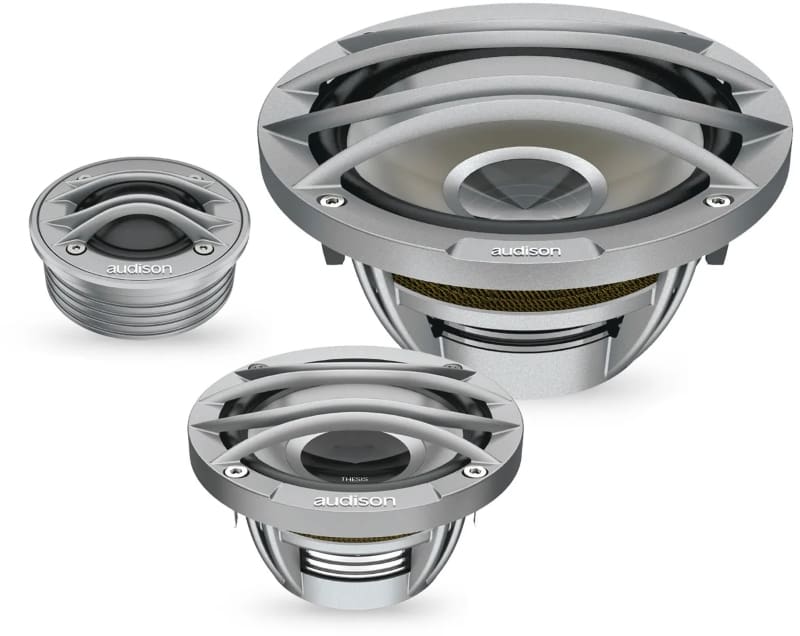
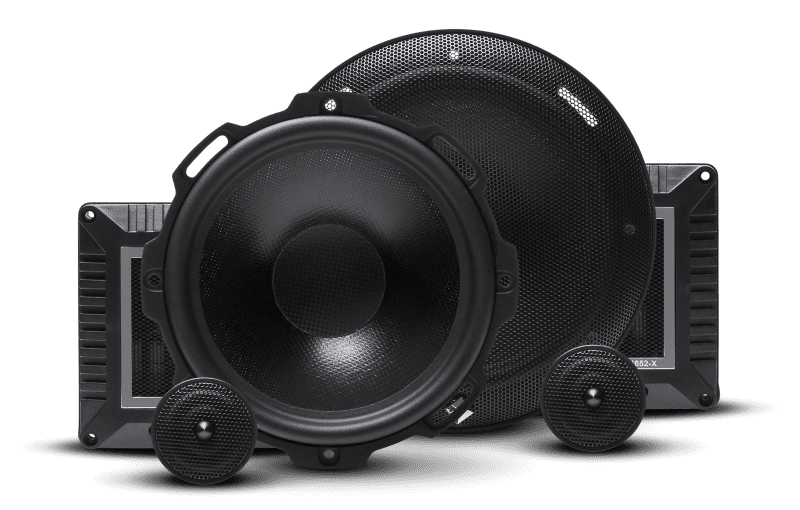
High-quality amplifiers are the next products to audition. Don’t let anyone tell you all amplifiers sound the same. That’s like saying every car painted red looks identical. It’s absolute hogwash. We have a series of articles that explain the sonic and performance differences between amplifiers. Once you know what a good amplifier sounds like, they’re easy to pick out.
Lastly, we have source units and signal processors. Don’t think these all sound the same. For example, a source unit like the Sony XAV-9000ES sounds more detailed than the XAV-AX6000. Both are excellent source units, but the extra investment in the Mobile ES model is definitely audible and very worthwhile. A similar philosophy applies to other brands with a “better and best” approach to product development.
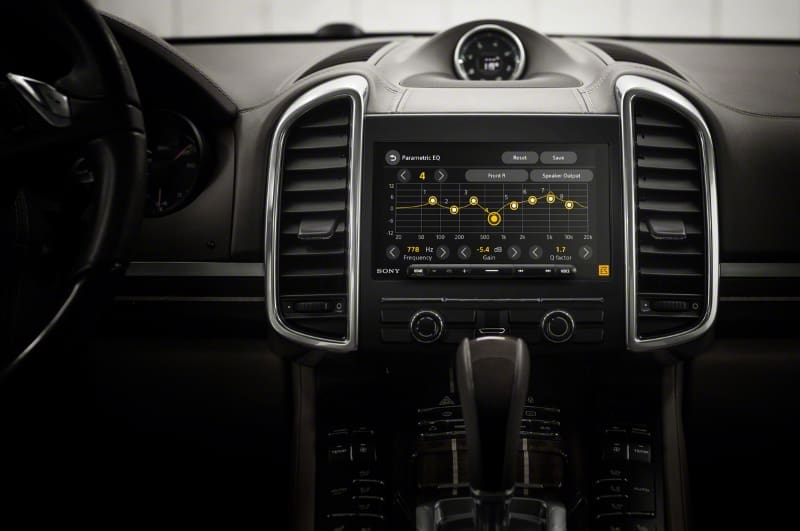
Integration Considerations
Suppose you ask a shop to design and install a new audio system with an aftermarket radio. In that case, aside from the mounting kit, the only integration element to consider is to ensure that the radio controls on the steering wheel and maybe a backup camera work with the new source. A product like the iDatalink Maestro RR can help with this.
If you have a vehicle where the radio can’t be replaced, your best bet for creating an amazing audio system is to seek a preamp explicitly designed for your application. The Maestro AR is also a good option. Companies like Stinger/PAC, Metra, RDV Automotive Technologies and mObridge have options for many vehicles. Using a dedicated preamp ensures that the system will perform as expected.
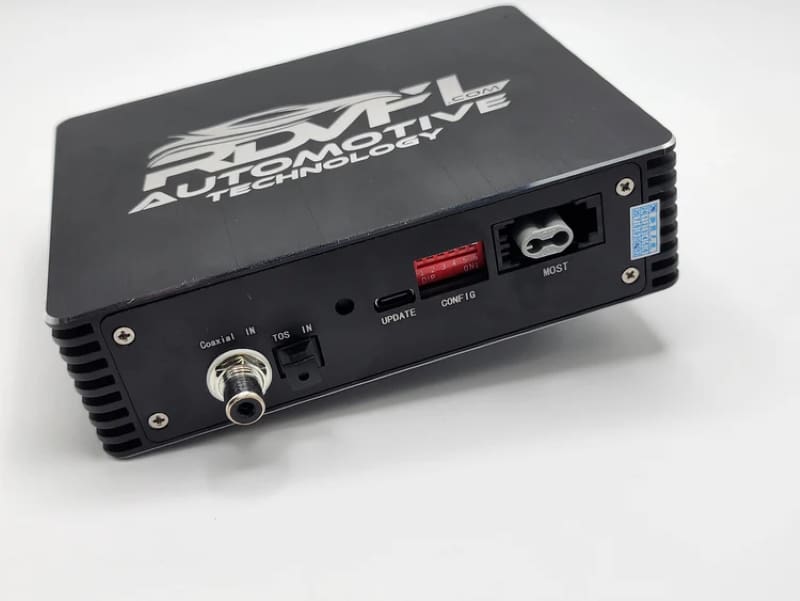
If no interface is available, your installer will have to work with the signal from a radio or factory-installed amplifier. Companies like Audison, Rockford Fosgate, KICKER, Wavtech, JL Audio and AudioControl have interfaces. These may include integrated load resistors to help make sure that the factory radio or amplifier functions properly.
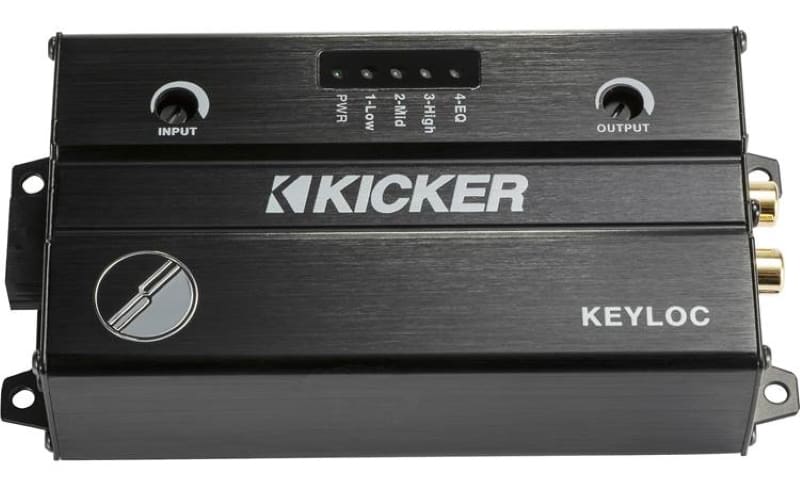
Your installer will need to check the factory amplifier’s frequency response, phase response and output level as part of the system design process so that the audio information is present and can be used for the planned aftermarket system. The function of an integrated upmixer also needs to be tested. Skipping this testing can yield undesirable performance or make it impossible to complete the upgrade.
Car Audio Installation Considerations
After the system has been designed, the components chosen, and the source dealt with, it’s time to start the installation process. Here, you’ll have to work with the specialist designing the system to determine how you want things to look. Will you use the original speaker locations, or do you want new pods built for the dash or A-pillars? Where will the amplifiers and processor be mounted? How will the wiring be run? Do you want any products to be visible, or should the installation be clean, tidy and concealed like a factory-installed system?
Cosmetics are an important consideration in system design. Many audio system designers tend to lean toward a highlighted “show car” look when equipment, especially wiring, should be invisible or concealed behind trim panels. A world-class installer once said, “Nothing ages a stereo installation faster than being able to see the equipment.” Automotive design experts like Chip Foose follow this philosophy in vehicle designs and have the audio gear concealed behind removable trim panels.
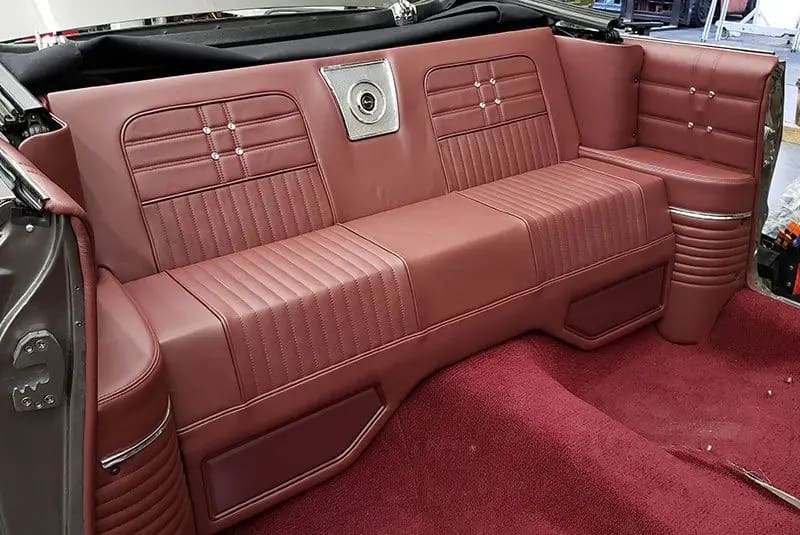
You’ll will want to know how everything will be secured to your vehicle. Does the shop use wood or composite speaker adapters? How will the enclosure be attached to the cargo area? What secures the amp rack to the car? Audio components sitting in the cargo area can become dangerous in a severe accident. Review the design plan and ask questions about wire routing and fusing.
Though the topic of interconnects should fall under product selection, it’s usually discussed as an installation supply or accessory. If the audio equipment (amplifiers and signal processors) has differential inputs (and it all should), you will want to run twisted-pair interconnects. If those include a layer or two of shielding, all the better. Fancy cables that supposedly “sound better” are a waste of money in an audio system that will be adequately calibrated once installed. We tested several interconnects in this article.
Mobile Audio System Calibration
Finally, once all the equipment has been installed, how the audio system is calibrated is crucial to its performance. Setting crossover points is the first step your installer will take. The crossover points depend on the size of the speakers, their excursion capabilities and distortion characteristics, and the size of the speakers operating in adjacent bands. The crossover frequencies might need to change to deal with resonances and reflections caused by installation location choices. As you can see, they aren’t an arbitrary consideration.
Next, the technician will need to start setting the signal delays for each speaker and then work on equalization. Getting either slightly wrong can wreak havoc with the soundstage, imaging and tonal balance. The technician will likely make an initial set of adjustments, then remove the microphone or microphones from the vehicle and have a listen. The last step is for you to listen to the system and provide feedback on what you like and what they can adjust further.
For example, some system designs might include a lot of bass, while others might focus on making instruments like drums or bass guitars sound as lifelike as possible. Ultimately, it’s your audio system, so it should be calibrated in a way that you will enjoy.
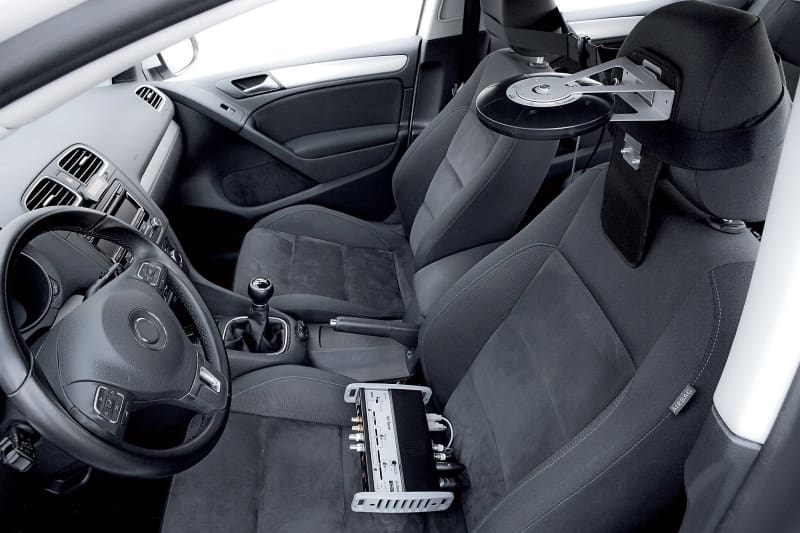
Where to Save Money in Car Audio Installations
So, is there anywhere in the system where a person can save money? Can they skip the integration process? Not really. If you don’t have a full-bandwidth signal, your installer will never be able to make the system sound good. Can you save money on the installation? Yes, certainly. You might not want a custom amp rack. The amplifiers could be bolted to the back of the subwoofer enclosure or mounted securely under the front seats. You could sacrifice some soundstage height and stability using a two-way speaker set instead of custom pillars with three-way speakers up front.
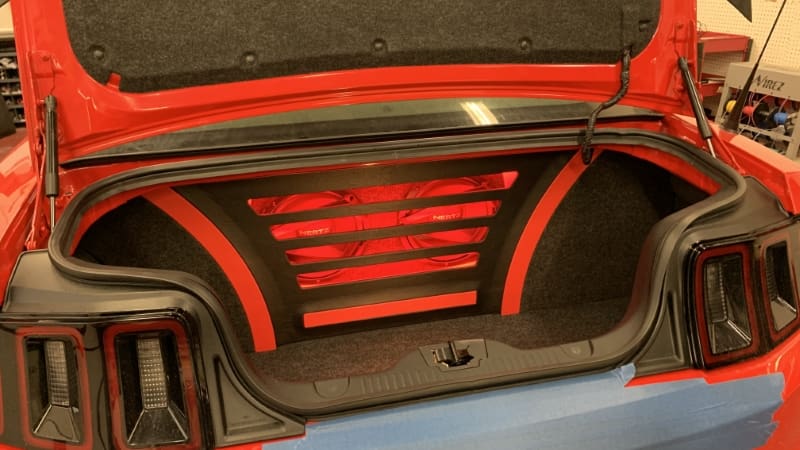
Can you save money by using less expensive gear? You can, but you are sacrificing clarity. Yes, a good multi-channel DSP-equipped amplifier might be $1,500. You might be able to find a lower-power amp with similar processing features, but then the system likely won’t play as loudly. You could use several inexpensive amplifiers with a reasonable-quality processor, but the “cheap amplifiers” will add more distortion to the system and won’t be as clear. The same goes for speakers. At low volumes, you can get away with a mid-level solution. If you want the system to stay crystal clear and composed when cranked, inexpensive speakers likely won’t have the features and performance capabilities required to sound good when pushed harder.
Once you’ve heard what a great system can sound like, deciding where to save money can be challenging. Audition as many systems as you can. You’ll quickly learn which speakers and amplifiers can reproduce a snare drum with a snap that will make you wince and those that sound soft and mushy. As a famous car audio competitor once said, you want to avoid systems where the midbass sounds like someone hitting a mashed potato with a tennis racket.
Drop by a local specialty mobile enhancement retailer today and discuss your system’s goals. Ask to audition their demo vehicles. Listen to products on their display boards. Look at the work they have completed. You’ll learn quickly who offers exceptional execution on all the critical factors in creating an amazing-sounding car audio system upgrade.
